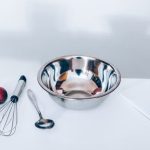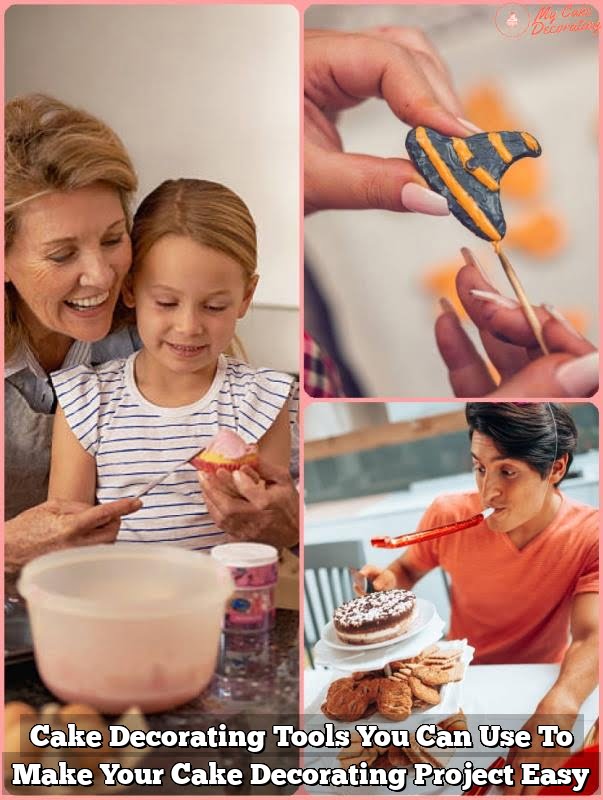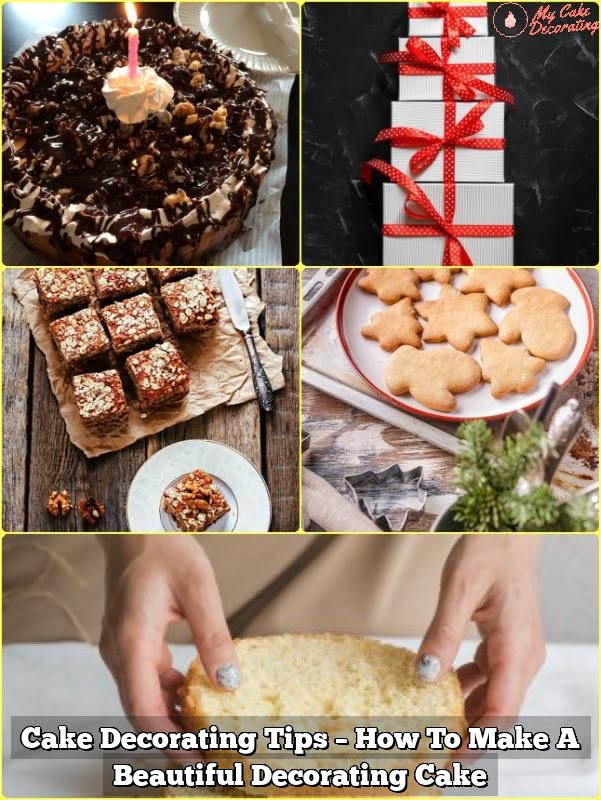Cake decorating allows for endless creativity and personalization, but sometimes finding the perfect mold can be a challenge. In this article, we will delve into the world of cake decorating molds and show you how to make your own customized designs. If you’ve ever wondered “how to make a mold for cake decorating,” you’re in the right place.
Understanding the basics of cake decorating molds is essential before diving into creating your own. Whether you’re a baking enthusiast or a professional pastry chef, making your own molds can offer numerous benefits in terms of creativity, cost-effectiveness, and customization. By following our step-by-step guide and exploring different shapes and designs, you’ll be able to elevate your cake decorating skills to new heights.
In the upcoming sections, we will walk you through the necessary materials and tools needed for making cake molds, provide tips and tricks for perfecting your creations, discuss techniques on using homemade molds effectively, explore ways to customize them, troubleshoot common issues that may arise during the process, and ultimately inspire you to embrace creativity through DIY cake decorating molds. So let’s get started on this exciting journey of unleashing your artistic flair in the world of cake decoration.
The Benefits of Making Your Own Cake Decorating Molds
Cake decorating molds are essential tools for creating beautiful and intricate designs on cakes, cupcakes, and other baked goods. While there are plenty of pre-made molds available in stores, making your own cake decorating molds can offer a variety of benefits.
Not only can you customize the shape and size of the mold to suit your specific needs, but you can also save money in the long run. By learning how to make a mold for cake decorating at home, you can unleash your creativity and experiment with unique designs that may not be readily available in stores.
When it comes to making your own cake decorating molds, there are a few necessary materials and tools that you will need to get started. Some key items include silicone molding putty or liquid silicone rubber, the object you wish to create a mold of (such as a figurine or shape), a mixing container, and gloves for safety.
Additionally, having a flat surface to work on and following proper safety precautions when working with chemicals is crucial. By investing in these basic materials and tools, you can begin the process of creating customized cake molds right from the comfort of your own kitchen.
To create your own silicone mold for cake decorating, follow these simple steps:
- Prepare your object: Make sure the object you want to create a mold of is clean and dry.
- Mix the silicone: Follow the instructions included with your silicone molding material to mix it properly.
- Create the mold: Press the mixed silicone around the object firmly and evenly.
- Allow it to cure: Let the silicone cure according to the recommended time frame before removing the original object.
By following this step-by-step guide on how to make a mold for cake decorating, you can unlock endless possibilities for customizing your cakes and desserts. Experiment with different shapes, sizes, and designs to elevate your baking creations and impress friends and family with professional-looking results. With practice and patience, you’ll soon become an expert at making homemade cake decorating molds that will take your culinary skills to new heights.
Necessary Materials and Tools for Making Cake Molds
Cake decorating molds are essential tools for creating beautiful and unique designs on cakes, cupcakes, and other baked goods. Making your own cake decorating molds can be a fun and rewarding experience that allows you to customize your creations to suit your specific needs and preferences. To successfully create your own molds, you will need to gather the necessary materials and tools. Here is a list of items you will need to get started:
- Silicone molding compound: This is the key material needed for creating flexible and durable cake decorating molds.
- Modeling material or object: You will need something to serve as the model for your mold, such as a small figurine, plastic toy, or sculpted piece.
- X-Acto knife or cutting tool: A sharp knife will be needed to cut away excess silicone and refine the shape of your mold.
- Release agent: This helps prevent the silicone from sticking to your model while making the mold.
- Mixing cups and stir sticks: These are necessary for mixing the silicone molding compound according to the manufacturer’s instructions.
- Protective gloves: It is important to wear gloves when working with silicone molding compounds to protect your skin.
Once you have gathered all the necessary materials and tools, you can begin the process of making your own cake decorating molds. Making molds at home gives you an opportunity to create unique designs that may not be readily available in stores. If you are wondering how to make a mold for cake decorating, follow these steps:
- Prepare your model by ensuring it is clean and dry before starting.
- Mix the silicone molding compound according to the manufacturer’s instructions in a well-ventilated area.
- Pour the mixed silicone over your model, making sure it covers all areas evenly.
By following these steps and using the right materials, you can create custom cake decorating molds that reflect your personal style and creativity. Experiment with different shapes, sizes, and designs to add a personal touch to your baked creations.
Step-by-Step Guide on How to Create a Silicone Mold for Cake Decorating
Creating your own silicone mold for cake decorating can be a fun and rewarding process. By making your own molds, you have the freedom to customize and create unique designs for your cakes. In this step-by-step guide, we will walk you through the process of making a silicone mold for cake decorating.
Gather Your Materials
Before you begin, make sure you have all the necessary materials and tools on hand. You will need silicone molding putty, a non-stick work surface, the object you want to create a mold of (such as a figurine or shape), a mixing container, stirring sticks, and gloves.
Prepare Your Workspace
Choose a clean and flat work surface to create your mold. Make sure the area is well-ventilated as some molding putties can emit strong odors. Lay down a non-stick mat or parchment paper to prevent the putty from sticking to your surface.
Mix and Shape the Silicone Mold
Follow the instructions provided with your silicone molding putty to mix it thoroughly. Once mixed, start shaping the putty around the object you want to create a mold of. Press the putty gently around the object, ensuring that all details are captured. Allow the mold to set according to the manufacturer’s instructions before removing it from the object.
By following these steps, you can easily create your own silicone molds for cake decorating. Experiment with different shapes and designs to add a personalized touch to your cakes. Enjoy exploring your creativity through DIY cake decorating molds.
Tips and Tricks for Perfecting Your Homemade Cake Molds
Creating your own cake decorating molds can be a fun and rewarding process, but it may take some trial and error to perfect your technique. Here are some tips and tricks to help you achieve the best results with your homemade molds.
Firstly, it is important to choose the right type of material for your mold. Silicone is a popular choice due to its flexibility and ease of use. Make sure to use food-grade silicone that is specifically designed for molding edible decorations. Additionally, be mindful of any details or intricate designs in your mold as they may require a more flexible material to capture all the nuances.
When creating your mold, make sure to properly mix and pour the silicone according to the manufacturer’s instructions. Be sure to tap out any air bubbles by gently tapping the mold on a flat surface or using a toothpick to release trapped air. This will ensure that your final molded decoration comes out smooth and free of imperfections.
Lastly, consider adding some texture or embellishments to your mold for added visual interest. You can press edible pearls, sprinkles, or even small pieces of fruit into the mold before pouring in the silicone to create unique designs on your cakes. Experiment with different techniques and materials to see what works best for your creative vision when making molds for cake decorating purposes.
Exploring Different Shapes and Designs for Cake Decorating Molds
When it comes to cake decorating, the possibilities are endless. Exploring different shapes and designs for your cake molds can take your creations to a whole new level. Whether you’re looking to make a birthday cake with a specific theme, a wedding cake with intricate details, or simply want to add an extra flair to your everyday desserts, customizing your molds can help you achieve that.
One of the most popular shapes for cake molds is the classic round shape, perfect for creating layered cakes or simple designs. However, don’t be afraid to think outside the box and experiment with different shapes like hearts, stars, flowers, or even abstract geometric patterns. These unique mold shapes can add an element of surprise and sophistication to your cakes.
In addition to shapes, exploring different designs for your cake molds can also elevate your decorating game. From intricate lace patterns and textured surfaces to embossed details and 3D elements, there are countless ways to make your cakes stand out. By creating custom molds that reflect your personal style and creativity, you can truly make your cakes one-of-a-kind masterpieces.
| Shape | Design |
|---|---|
| Round | Lace Patterns |
| Hearts | Textured Surfaces |
| Stars | Embossed Details |
How to Use Your Homemade Cake Molds
Creating your own homemade cake molds opens up a world of possibilities when it comes to cake decorating. Once you have successfully made your silicone mold, the next step is to put it to good use. But how do you go about using your homemade cake molds effectively? Here are some techniques and ideas to get you started.
One of the simplest ways to use your homemade cake mold is to fill it with fondant or gum paste. Simply press the fondant or gum paste into the mold, making sure to fill all the crevices. Gently tap the mold on a flat surface to release any air bubbles, then carefully unmold the shaped design onto your cake. This is a quick and easy way to add intricate details and designs to your cakes.
Another technique for using homemade cake molds is to create chocolate or candy decorations. Melt chocolate or candy melts, pour them into the mold, and allow them to set completely before unmolding. You can then use these chocolate or candy decorations to embellish your cakes, cupcakes, or other baked goods. This adds a unique and delicious touch to your creations.
For those looking for more advanced techniques, consider using your homemade cake molds with isomalt or gelatin. These flexible mediums can be poured into the molds and will hold their shape once set. Isomalt and gelatin decorations are perfect for adding dimension and flair to special occasion cakes, such as wedding cakes or themed birthday cakes. Experiment with different colors and designs to truly make your creations stand out.
| Technique/Idea | Description |
|---|---|
| Fondant/Gum Paste Decorations | Press fondant or gum paste into mold for intricate designs. |
| Chocolate/Candy Decorations | Fill mold with melted chocolate/candy melts for edible decorations. |
| Isomalt/Gelatin Creations | Use molds with isomalt/gelatin for dimensional decorations on special occasion cakes. |
Creative Ways to Customize and Personalize Your Cake Molds
When it comes to cake decorating, customizing and personalizing your molds can take your creations to the next level. By making your own molds, you have the freedom to design unique shapes and patterns that truly showcase your creativity. Whether you want to add a personal touch to a special occasion cake or experiment with new designs, customizing your molds allows you to stand out and make a statement with your confections.
Adding Personal Touches
One of the best parts about making your own cake decorating molds is the ability to add personal touches. You can create molds that reflect the recipient’s interests, such as molding a sports logo for a fan’s birthday cake or shaping initials for a personalized wedding cake topper. By customizing your molds in this way, you can make each creation meaningful and special.
Experimenting With Colors
Another creative way to customize your cake molds is by experimenting with colors. Instead of sticking to traditional white or clear silicone molds, consider adding food coloring or edible paint to create vibrant and eye-catching designs. You can mix and match different colors, create ombre effects, or even add metallic finishes for a touch of elegance. Playing with colors is a fun way to bring your cakes to life and make them visually stunning.
Combining Different Mold Shapes
To take your customized cake molds up a notch, try combining different mold shapes to create intricate designs. For example, you can layer various shapes on top of each other for a 3D effect, or mix geometric patterns with floral elements for a unique look. The possibilities are endless when it comes to combining mold shapes, so don’t be afraid to experiment and see what interesting creations you can come up with.
By customizing and personalizing your cake decorating molds, you can unleash your creativity and elevate your baking skills. Experiment with adding personal touches, playing with colors, and combining different mold shapes to create one-of-a-kind designs that are sure to impress. With DIY cake decorating molds, the only limit is your imagination.
Troubleshooting Common Issues When Making Cake Molds
When embarking on the journey of making your own cake decorating molds, it is important to be prepared for any potential challenges that may arise along the way. While the process can be relatively straightforward with the right materials and tools, there are common issues that many DIY enthusiasts encounter during mold-making. By being aware of these issues and learning how to troubleshoot them effectively, you can ensure a smoother and more successful molding experience.
One of the most common problems that individuals face when making cake molds is improper mixing of silicone materials. To avoid this issue, it is crucial to carefully follow the manufacturer’s instructions for mixing ratios and curing times. Failure to mix the silicone components thoroughly can result in a mold that does not cure properly or has weak spots, leading to potential breakage when trying to remove the mold from the object.
Another frequent challenge in mold-making is air bubbles getting trapped within the silicone material. These air bubbles can create imperfections in the mold surface and affect its overall quality.
To prevent this issue, it is recommended to pour the silicone mixture slowly and steadily over the object being molded, while also tapping or vibrating the mold gently to release any trapped air bubbles. Additionally, using a toothpick or needle to pop any visible bubbles on the surface can help achieve a smoother finish.
Lastly, ensuring proper alignment and stability of your mold when pouring in the silicone material is essential for creating an accurate and functional cake decorating mold. If your mold shifts or tilts during the curing process, it can lead to distorted shapes and uneven edges in your final product.
To address this issue, consider using molds with built-in support structures or creating a stable base for your mold by securing it in place with tape or clay before pouring in the silicone mixture. By taking these precautionary measures and addressing common problems effectively, you can overcome obstacles in making cake decorating molds and achieve professional-quality results every time.
Conclusion
In conclusion, embracing creativity through DIY cake decorating molds can truly elevate your baking experience and allow you to express your unique style in every sweet creation. By learning how to make a mold for cake decorating, you open up a world of possibilities for personalized designs and intricate details that are sure to impress your friends and family.
Making your own molds not only gives you the freedom to customize shapes and sizes but also saves you money in the long run.
With the step-by-step guide provided in this article, along with the necessary materials and tools, anyone can learn how to create silicone molds for cake decorating. The benefits of making your own molds extend beyond cost savings; it also allows you to experiment with different shapes, textures, and designs that may not be readily available in stores.
Additionally, by exploring different shapes and designs for cake decorating molds, you can unleash your creativity and let your imagination run wild.
When using homemade cake molds, don’t be afraid to think outside the box and try new techniques or ideas. Whether you want to make themed cakes for special occasions or add unique touches to everyday bakes, DIY cake decorating molds provide endless opportunities for innovation.
Remember, practice makes perfect, so keep experimenting with different methods and materials until you find what works best for your individual style. With dedication and passion, you’ll soon become a master at creating stunning cakes that reflect your artistic vision.
Frequently Asked Questions
What Do You Use to Make Molds for Cakes?
To make molds for cakes, you typically use silicone molds as they are flexible and easy to work with. Silicone molds come in various shapes and sizes, allowing you to create intricate designs for your cakes.
How Do I Make My Own Molds?
Making your own molds can be a fun and creative process. One common way to make your own molds is by using silicone putty or mold-making silicone rubber. Simply mix the two components together, press the object you want to mold into the mixture, and wait for it to set.
How Do You Make Food Grade Silicone Molds at Home?
If you want to make food-grade silicone molds at home, it’s important to use materials that are safe for contact with food. Look for silicone rubber that is specifically designated as food-grade and follow the manufacturer’s instructions carefully when making your molds.
Make sure the area where you’re working is clean and free of any contaminants to ensure the safety of your food-grade silicone molds.

Welcome to my blog about home and family. This blog is a place where I will share my thoughts, ideas, and experiences related to these important topics. I am a stay-at-home mom with two young children. I hope you enjoy reading it! and may find some helpful tips and ideas that will make your home and family life even better!





